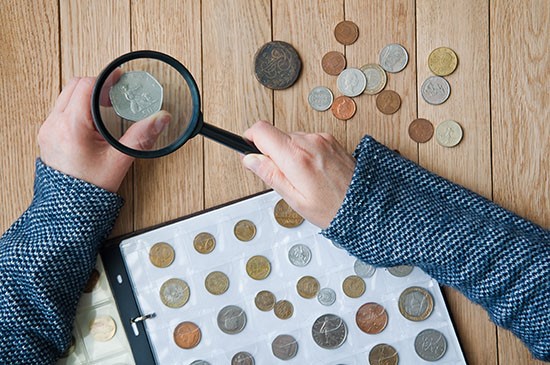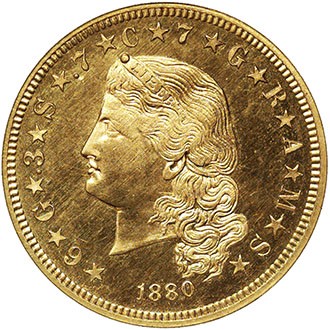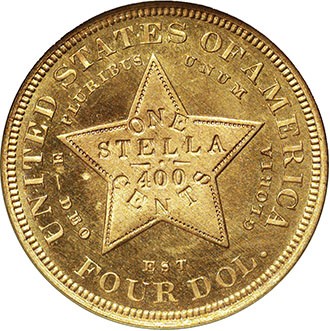Jim Bisognani: A Major Shift in Collecting
Posted on 9/8/2022
 |
The early fall season is when I love to pull out some coins from my collection, usually one or two red cardboard 2x2 boxes of raw coins that I haven’t visited in over a decade or more. You would be surprised what I find and become reacquainted with; it is fun. To me and most of my fellow coindexters, that is what makes this hobby great: It’s relaxing, educational and fun!
Sure, numismatics has evolved into a big business, with multimillion-dollar prices being realized at auction every month, or a new rarity breaking into the million-dollar club. But there are, of course, numerous reasons to collect coins. If your budget allows, you can swing for the fences for mega-rarities with other well-heeled enthusiasts.
Actually, if I had the resources, I would be on the hunt for an 1839 “Una and the Lion.” This has been a favorite gold coin of mine since I was a teen. Yet, now even a lower-quality specimen — say NGC PF 63 Ultra Cameo — will run around $300,000 or more. It’s certainly out of my league but not out of my consciousness. I could have done it, I guess, over 40 years ago — when I almost had a one-coin collection.
 |
 |
| Great Britain 1893 Una and the Lion Gold 5 Sovereign graded NGC PF 63 Ultra Cameo Click images to enlarge. |
|
I was in my early 20s; I had just finished my stint working for my first coin dealership, Essex Numismatic Properties in my native Portsmouth, New Hampshire. The firm was a bit of an innovator then, working as a supplier to Wall Street.
In 1977, the firm Shearson Hayden Stone, in a highly unusual move for a Wall Street firm, decided to offer coins as investments along with stocks, bonds, commodities, futures and other traditional hedge investments. Max Leibler, who was Shearson’s vice president for precious metals at the time, mailed out pamphlets on rare coin acquisition as an investment medium to thousands of their existing commodity clients. This was in 1977! The response was incredible. It had more or less perfect timing as the metals were on the move and rare coins were back in mainstream conversation — not only as collectibles but as investments.
I fondly remember seeing the great purchases and whole estate acquisitions made by Rick Bagg and Jim Jelinski, the partners and owners of Essex. Each time after a buying trip, the new inventory was sorted, cataloged, priced and then both offered up for sale to mainstream collectors and supplied to Shearson for their investment program.
At that time, I had a small yet high-grade group of coins, mostly US. I had a small glass-topped wooden-framed showcase to display them. I had placed a black satin fabric on the bottom and had laid out my collection in clear vinyl 2x2 flips on top for me to enjoy viewing. Every so often, I would rotate the coins’ positions for change of pace. When I wasn’t viewing my collection, I would keep that display case underneath the living room sofa at my parents’ house for safekeeping.
It was late summer 1979, and the metals markets and high-grade and rare coins were raging, much like we have been experiencing during present years. One of my old bosses, Jim Jelinski — or “Big Jim” — had called and said that he was in the area and would like to stop by.
“Sure, that would be great.” I also reminded him that there was a softball game that he was welcome to join that afternoon if he had time. Big Jim said, “Sounds like fun, I always have my batting gloves and mitt in the trunk.”
Before his arrival, I, of course, was compelled to pull my fledgling collection and display from under the sofa and show Big Jim. After our hellos and handshakes, Big Jim spied the showcase, which was now sitting on top of the coffee table in the living room. After a few moments of rather intense ogling, Jim looked at me and said, “Can I buy some of your coins?”
I hadn’t given it a thought. I just wanted to show Jim my collection. I didn’t think he would be actually interested in buying any of it. So, I responded, “What coins do you want?” Well, that question left the door wide open for what was a big surprise to me when Big Jim uttered, “How much for everything?”
Ten minutes before, I hadn’t any notion of parting with anything from my collection. Now this guy wanted to buy everything I had. I quickly scanned my wares and figured I had about ten years and around $1,000 invested in what was in my showcase. I calculated a sum — which I believed would be way too high — and bordering on the absurd. “$25,000” I replied.
Big Jim looked down at the collection, and I could see his eyes race over the coins. Without looking up, Jim repeated, “I can have all these coins for $25,000?”
I then felt a little queasy and scared inside; my heart was palpitating. I developed a bit of cold sweat on my brow as I realized that Big Jim was serious about my price. So I quickly countered with, “But I don’t want to sell everything. I mean, this is my whole collection.” Then, in a mild capitulation, Big Jim countered with, “Well, you gotta sell me a few of your great coins.”
After that, I had a thought. The image of a $4 Gold Stella raced before my eyes — I could buy one if I sold my entire collection. I even played fleeting host to acquiring the great “Una and the Lion.” Then I quickly shut down these thoughts with a sobering realization; I did not want a one-coin collection. I did capitulate and ultimately sold a few coins to Big Jim for the princely sum of $5,000.
Today, I am hearing similar questions from collectors who have seen their own personal collections skyrocket in value. Should I sell, or should I buy more, or perhaps look at collecting something else?
Concerns continue to arise as so much new big money is chasing after top-tier rare and iconic US and world coins, too. As one longtime collector said to me, “These non-coin guys are shutting a lot of us real collectors out of the market. Series that we have been collecting and building for years are now out of reach for many of us because of the demand these new folks are applying.”
I truly understand the sentiment. Because what’s good on one side — attracting new money and new interest to the coin market — is a detriment for the other, effectively terminating interest in other areas of the market because of accelerated cost. After all, this isn’t a factory-produced product made-to-order or on demand. The supply of truly collectable coins is finite. Collectors in many cases wait many months or years before finally finding the coin or coins that they desire.
“Millionaires — billionaires, in many instances — are looking for instant gratification and want to buy the whole enchilada at one time, which is impossible. They aren’t collecting; they are funding dealers and coin brokers for them,” said Robert, a serious collector who also happens to be a US attorney.
We can all cite examples of soaring values in this numismatic market. With gains like these in mind, more and more investors are taking notice and abandoning the paper-backed securities markets — some in frustration, and others for diversity — and are putting their money into coins as an investment alternative.
However, this new wave of well-funded coin investors should not be confused with collectors, who acquire coins as a hobby driven by aesthetic appeal, historic interest or simply for the challenge of hunting down elusive dates and varieties in completing a collection.
The following wise words are from my first boss, good friend and ally, Rick Bagg, from nearly 45 years ago: “Aside from selecting an ethical dealer, the investor must monitor market prices before buying. One way of doing this is to take notice of auction values. Most reputable auction houses will furnish prices realized at their latest sales for a slight fee covering the cost of mailing and handling.
The investor should also know that dealers’ spreads between buying and selling prices may run between 20 and 40 percent. Thus, investing in coins is a long‐term affair, not an in‐and‐out deal. And, equally important, the value of coins depends heavily on their grading or condition, just as the price of stocks reflects the condition of the company that issued them.
Also, remember that as the number of new investors and collectors increases, both parties are competing for a static or even shrinking quantity of available coins.”
Some sage advice from Rick. Of course, this commentary was prior to the advent of third-party certification, so collectors or investors of nearly a half-century ago had to be very careful about who their source was, what their individual grading standards were and how they would hold up in the marketplace.
 |
|
A major, longtime New England dealer added the following to consider: “Today, we have the transparency of grading, but we are also subject to market manipulation. Many experts within a specialized field who tout their coins as the “best of the best” are looking for prices commensurate with their designation and blessing.”
It depends on where you and your finances are. Are you a long-term collector or a short-term investor? Are you chasing modern low-population rarities or established historic numismatic icons from the US or the world? The choice is ultimately with the collector.
So if your private collection has become large and you are in line for a substantial profit if you were to liquidate, perhaps then the notion of transitioning to and targeting a single treasure coin may be a viable and exciting opportunity. This may be especially enticing for those of us coindexters of a more advanced age looking to downsize. Maybe a Stella or Una and the Lion could be on your coin bucket list.
Conversely, if you are a multiple millionaire and you want to chase an 1804 Dollar, 1913 Liberty Nickel and perhaps want to pry loose the only (at present) available 1933 $20 Saint and either a single coin or two will constitute your “collection,” that is fine. If a network of billionaires wishes to target and buy all the rare and/or unique coins on the planet, well, that is their right, too.
I know personally, as I look back nearly 45 years ago, I’m glad that I didn’t sell my entire collection. I don’t know if I would have been able to start over. I still have some of the pieces that I had 45 and even 50 years or more ago. I don’t think I would trade that joy of picking up an old red cardboard box holding hundreds of coins, which I can become reacquainted with and enjoy for the hobby itself.
Until next time, be safe and happy collecting!
Want to see more articles like this? Subscribe to the free NGC Weekly Market Report.
Stay Informed!
Get the latest NGC news delivered straight to your inbox.


